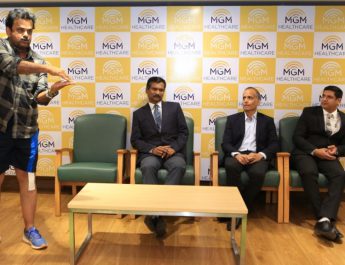-
52% of adolescents used an active mode of travel to or from school (either walking or cycling at least 1 trip/week), with no gender differences and 44% used assisted modes of travel
-
Most adolescents reported that they did not usually walk to (73.5%) or from (69.1%) school with 23.5% reporting walking to and 28.1% from school 5-6 days/week.
-
Similarly, most adolescents reported no cycling to (78.4%) or from (78.1%) school, with 20.1% and 20.4% cycling to and from school, respectively, 5-6 days/week.
In an effort to reinforce the importance of physical activity among adolescents in India, Dr. Mohan’s Diabetes Specialties Centre and Madras Diabetes Research Foundation (MDRF) today published the findings of a study titled, BE ACTIV. The study aims to identify and understand the comprehensive correlates of Active School Travel (AST) among adolescents covering all levels of the socio-ecological model. Helmed by Dr.R.M.Anjana – Managing Director of Dr. Mohan’s Diabetes Specialties Centre, the study findings revealed that parental restrictions and distance to school as the strongest barriers for Active School Travel among adolescents in Chennai.
Active School Travel (AST) refers to an important domain for physical activity (such as walking, cycling) undertaken by adolescents as part of their commute to schools daily. In India, millions of children and youth travel to school every day, and escorting adolescents to school via a range of motorized travel modes is common. Previously published studies indicate varying rates of AST among adolescents but there is a lack of information on barriers and facilitators of AST among adolescents in India, especially across all levels of socio-ecological models. To understand the correlates, MDRF and Dr. Mohan’s conducted a cross-sectional study of 324 adolescents aged 12-17 years from diverse areas of Chennai to aid the development of future strategies to improve rates of AST in India.
Revealing an array of insights around the ecological correlates of adolescents AST, the study stated that only 52% of adolescents used AST at least once per week, and there was inequity in AST based on family income. The study revealed that most adolescents did not usually walk to (73.5%) or from (69.1%) school, with 23.5% reporting walking to and 28.1% from school 5-6 days/week. Similarly, most adolescents reported no cycling to (78.4%) or from (78.1%) school, with 20.1% and 20.4% cycling to and from school, respectively, 5-6 days/week. The study also revealed that adolescents who perceived their school as being located too far had 75% lower odds of walking or cycling to school and adolescents who stated parental restrictions had 82% lower odds of AST.
Commenting on the occasion, Dr. V Mohan, Chairman and Director of the Institution said, “Identifying ways to increase physical activity amongst adolescents has become imperative. Active School Travel (AST) like walking or cycling to school are very common ways in which adolescents can increase their physical activity levels. The BE ACTIV India study is one of the first studies to study individual, social, family and environmental factors that play a role in influencing engagement in AST among adolescents in India. This was done as part of an international collaborative network working in the field of physical activity called IPEN (International Physical Activity and the Environment Network).”
Adding to this, Dr. R.M Anjana, Vice-President and Managing Director, said “In India, there are no catchment area policies restricting the choice of school. Hence school selection is mainly up to the parents; thus, children may attend schools with better merit/academic performance that are located far from home. It is, therefore, unsurprising that almost 50% of adolescents considered their school to be too far to walk or cycle to. Opting to attend schools located closer to home or creating catchment areas for schools through policy measures may result in increases in AST.”
Dr. R. Guha Pradeepa, Senior Scientist & Head, Research Operations, MDRF adds, ‘52% of adolescents used an active mode of travel to or from school (either walking or cycling at least 1 trip/week), with no gender differences. However, a higher proportion of boys compared to girls cycled to school, and a greater proportion of girls than boys reported walking to school. A higher proportion of adolescents from low family income reported AST than those with high family income. Overall, 44% used assisted modes of travel, with higher use among those from high-income families. After AST, the next most frequent form of transport mode by adolescents was public transport which included using the bus, train and share autos.’
Dr. Ranjani Harish, Senior Scientist & Head, Translational Research, MDRF summarized saying, “At the environmental level, items such as the perceived presence of one or more dangerous crossings, school being too far away, and too much traffic were associated with lower odds of reporting AST once or more per week. At the social level, the perception that it is not fashionable to walk, having to cross unsafe places to reach places and parents not allowing their child to walk or cycle were associated with lower odds of using AST. At the individual level, those who did not enjoy to walk or cycle or were lazy to do the same were not associated with AST.”




